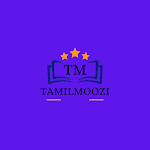• In the aftermath of Second World War a new era
began.
• It was the beginning of the decline of European
colonial empires and the independence of colonies
in Asia and Africa.
• If the effects of World War I led to the communist
revolution of Russia, the Second World War played
a big part in the communist revolution in China.
• The emergence of the US and the USSR as super
powers resulted in the division of the world into
two antagonistic blocs.
• A cold war situation triggered deadly conflicts in
• Under the Marshall Plan for reconstruction of the war-
ravaged Europe, the US won the trust of the great powers
in Europe.
• Soviet Russia, by demonstrating solidarity with the
liberation struggles of countries in Asia and Africa, earned
the goodwill of the latter.
• The Non-Aligned Movement played a limited role in
containing the conflict between the two power blocs.
• In a bid to wriggle out of US control, European countries
started the European movement in the form of Council of
Europe.
• This developed into the European Common Market and
finally into what is today the European Union.
• The Cold War period ended with the fall of Berlin Wall.
Korea, Cuba, Vietnam and West Asia.
The Chinese Revolution 1911
• The disintegration of the Manchu dynasty began with the death of the Dowager-
Empress in 1908.
• The new emperor was two-years old and the provincial governors began to assert
their independence.
• In October 1911 the local army mutinied and the revolt spread.
• Provincial governors removed the Manchu garrisons and proclaimed their
independence.
• Already there were a few middle-class leaders.
• Dr. Sun Yat-sen was one among them.
• On hearing the news of the rising in a newspaper in the United States Sun Yat-sen
arrived in Shanghai and was immediately elected provisional president of the new
Chinese Republic
The Long March 1934• As Chiang Kai-shek had built a circle of fortified posts
around the communist positions, Mao wanted to move out
of Hunan for safer territory.
• By 1933 Mao had gained full control of the Chinese
Communist party.
• In 1934, the Communist army of about 100,000 set out on
the Long March.
• This march has become legendary. Of the 100000 who set
out, only 20,000 finally reached northern Sheni late in
1935, after crossing nearly 6000 miles.
• They were soon joined by other communist armies.
• By 1937 Mao had become the leader of over 10 million
people.
Korean War
• The Korean War made the Cold War really
hot. Since Korea was partitioned as North and
South (1945), each side sought to win
legitimacy by unifying the country.
• The President of North Korea Kim II (People’s
Republic of Korea) decided to act before his
southern rival, Syngman Rhee (the Republic of
Korea), got the chance.
• He launched an attack in June 1950, with the
tacit support of Stalin. Both Kim and Stalin did
not expect the US to intervene.
• The war lasted for three years.
• The human cost was enormous. But the
Korean people gained nothing.







0 கருத்துகள்